Cocullo
A Quiet Place
Cocullo is like a ghost town. There is no one about. As we climb the silent winding streets to the tower, we pass windows boarded up and wooden doors – no doubt beautiful in their time – still in place but gnarled by time and neglect. I half expect tumbleweed to come rolling down the streets towards us.
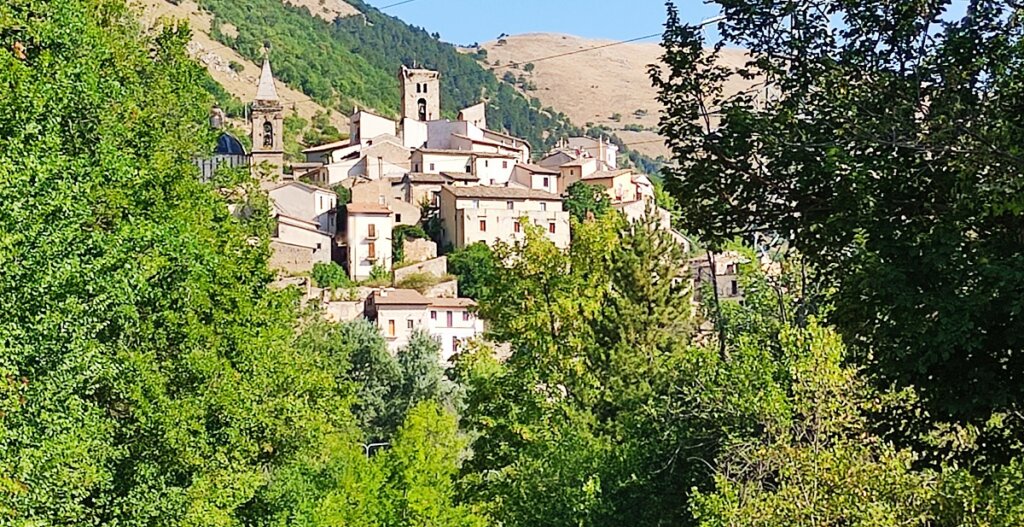
There is life at the top, though not human life. A flock of swifts, black darts against the azure sky, are giving an aerobatics display.
It is still early morning. We rest for a while beneath the twelfth century tower, admiring the still sturdy medieval stonework and enjoying the crisp mountain air.
This is the bell tower of San Nicola. The remains of the church, partly destroyed in an earthquake in 1915 and never restored, include a rose window and, carved into the stone above it, an interesting coat of arms.

An evil duke
It is the crest of the infamous Duca Sarchia, known for his enthusiastic practice of jus primae noctis, by which he claimed the right to seduce young brides on the first night of their married life. The nasty man was eventually murdered and the brides avenged.
Such brutal goings on seem distant on this innocent bright blue morning. But if the ghost of the evil man hovers nearby, I feel reassured that the darting, divebombing swifts will allow it no peace.

Leaving the birds to their dizzying aerobatics we set off again. We begin to notice signs of life. A pot of bellflowers on a windowsill, their petals gently nodding. Logs stacked outside a door, ready for winter. The aroma of coffee. And from an open window, the enquiring voice of a child and the soothing tones of the response.
Medieval architecture
Meanwhile, we admire the well preserved medieval architecture. There are the ancient city gates: Porta Ruggeri, Porta Renovata (recently restored, as the name suggests) and Porta di Manno.

We peek into low-arching passageways, peer at mullioned windows and the crests of important families. We pause before the church of the Santa Maria delle Grazie to admire its boxy façade with its rose window and sixteenth century statues, one on either side of the door.

It is here that the Mayday celebrations for San Domenico (see below) now take place since the original venue, the Sanctuary of San Domenico, was badly damaged by the earthquake of 2009.
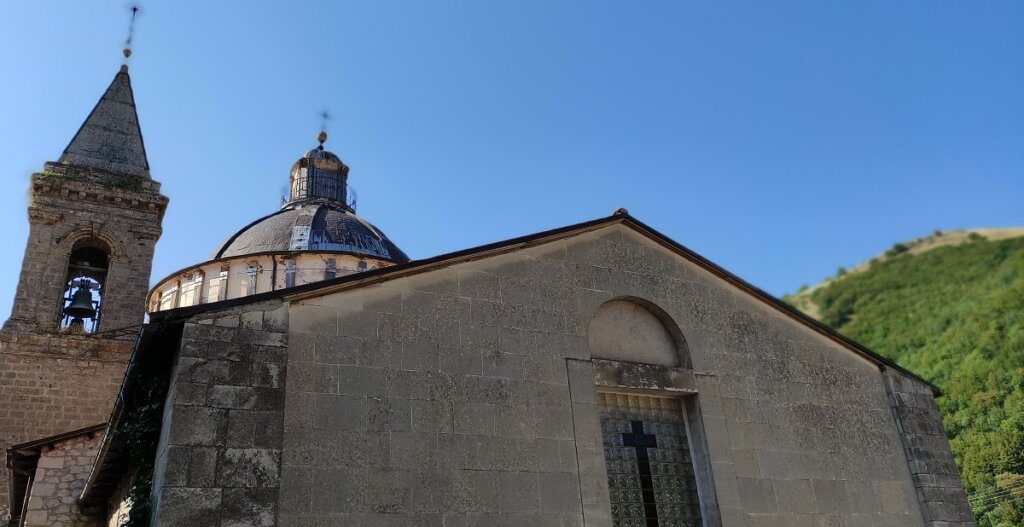
Cuculum and abandonment
Archaeological finds in the area point to a pre-Roman settlement. By Roman times, the town of Cuculum must have been a lively place. Located a little further down the valley on the road from Rome to the Adriatic it was in a strategic position, and I can picture travellers mingling with tradespeople in the town’s bustling markets.
Now just over 200 people live here. There’s nothing to keep the young folk, says a man we meet in the bar, naming the blight of all small towns.
It’s not just the young people though. Life in the more remote hill towns in Abruzzo can’t be easy for the elderly either. On this summer’s day the air is fresh and crisp, and walking is no hardship. But we are 900m above sea level and Cocullo is covered in snow for several months of the year.
What must it be like, I wonder, to drag your shopping up these steep winding streets with snow and ice all around? It’s little wonder that people have abandoned the hill towns for an easier life on the coastal plain.
Festa dei Serpari
On the first of May every year, though, this sleepy town is invaded by so many sightseers that the motorway exit, I am told, is backed up for kilometres.
This famous festival is in honour of San Domenico Abbate, the town’s patron saint, who allegedly performed a miracle and saved a woman who’d been bitten by a snake. However, the festival has pagan origins and probably evolved in honour of the goddess Angizia, who protected against snakebites.
Snake experts, or serpari, begin to collect the snakes when the snow melts. On 1 May the statue of the saint is paraded through the streets wearing a scarf of live, writhing (but not poisonous) snakes.

On the morning of the procession, pilgrims flock to Mass in the church of Santa Maria delle Grazie. If you want to save on dentist’s bills for the coming year you can ring the bell there by pulling on the rope with your teeth. This is supposed to ward off dental problems, though I can’t help thinking it probably has the opposite effect. Just the thought makes my gums ache.
Trapped in the past or…..
As we’re leaving we notice a sign left by the fascists on the side of a house. No one has bothered to paint over it. It’s hard to escape the impression that Cocullo is trapped in its past.
And yet there are signs that the town is awakening from its long sleep. A few doors have been lovingly restored, some building work is underway. We spot a newly installed window overlooking the valley.
Who knows? New working methods might create an incentive for a new generation of remote workers to set up shop here, where housing is cheaper and life is slower and more wholesome.
I revise my earlier impression. Cocullo is not so much a ghost town as a community in waiting.
Cocullo is in the province of L’Aquila. From the A25 motorway, exit Cocullo


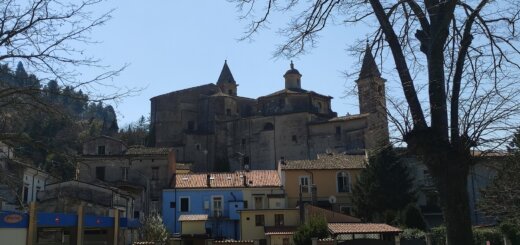
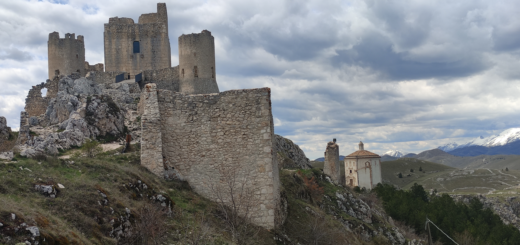
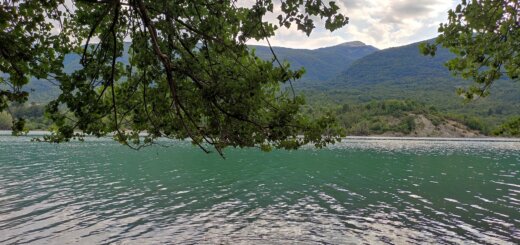

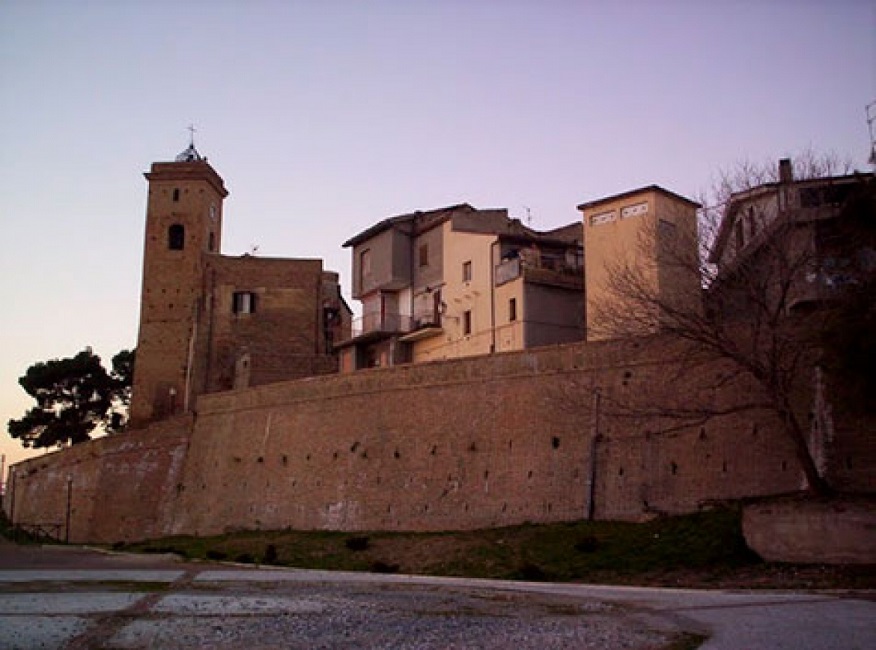
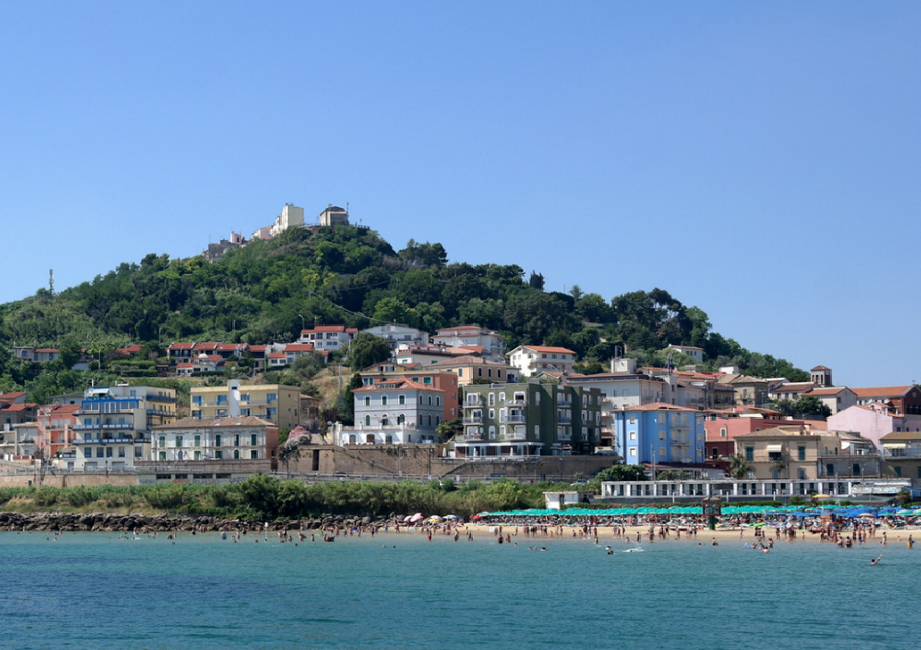
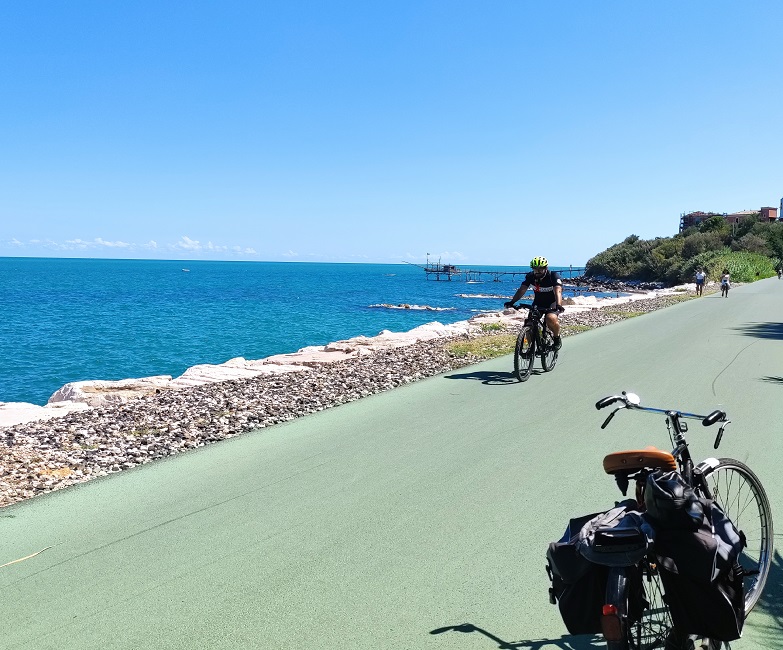
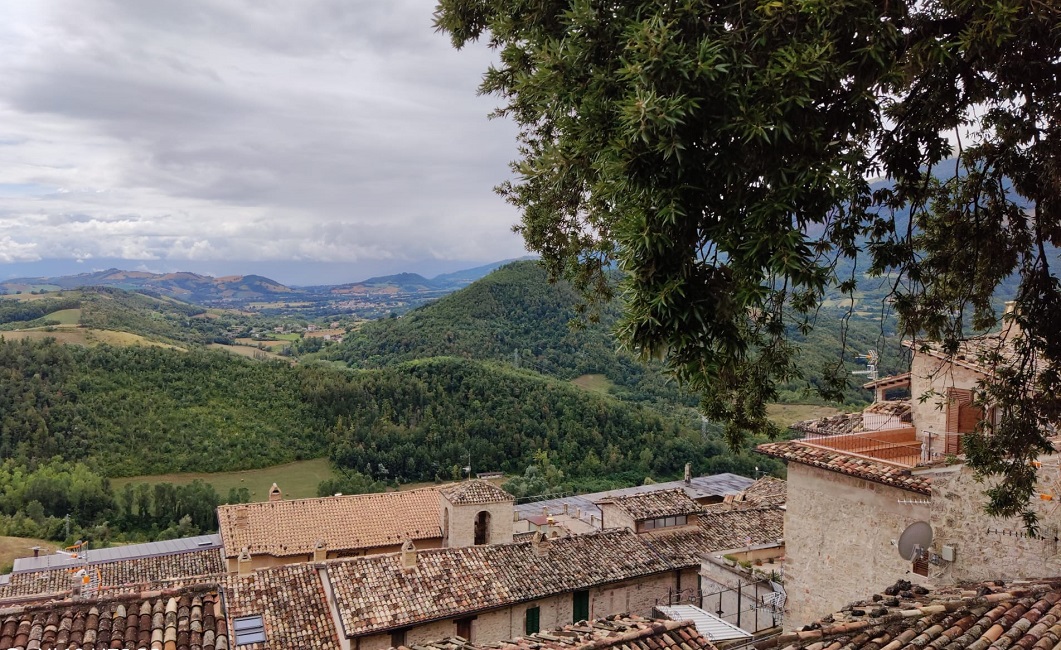
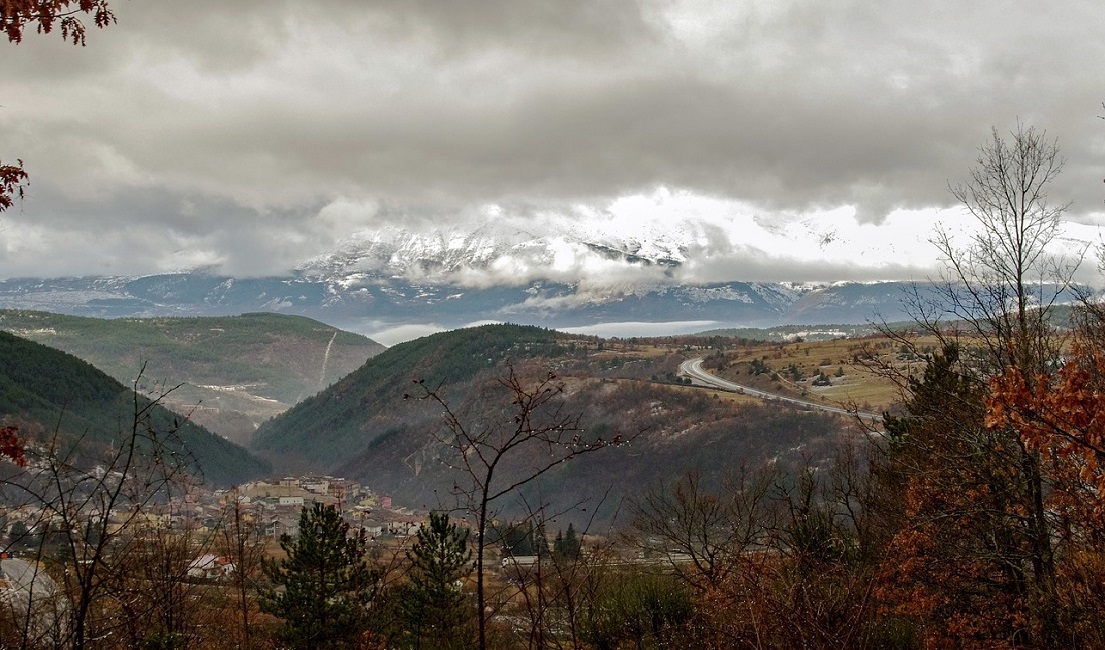
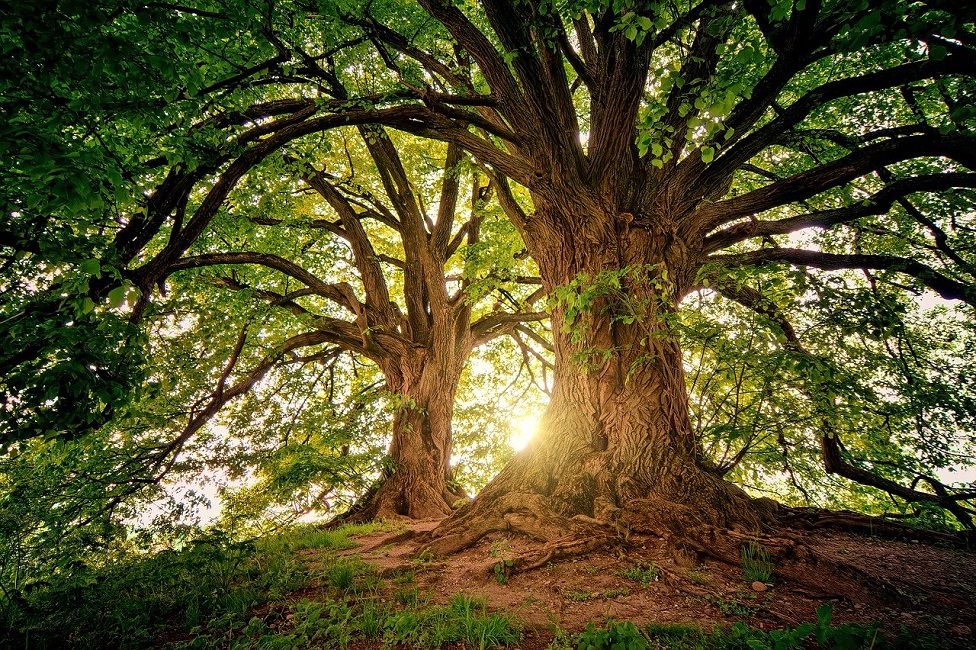
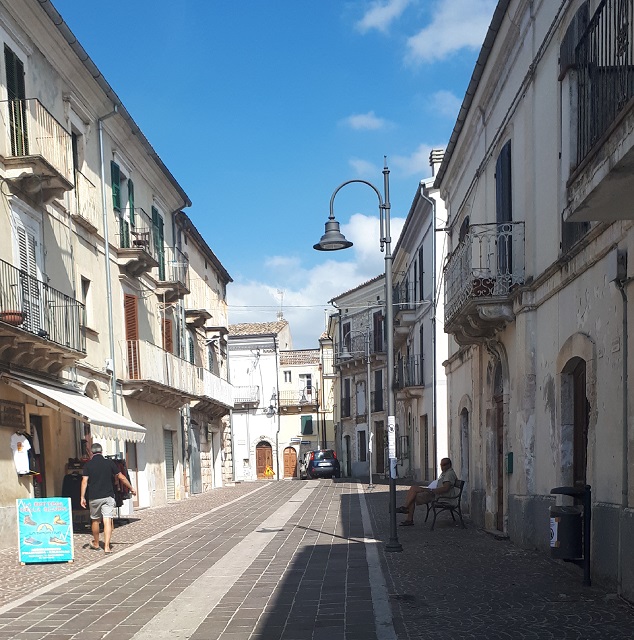
1 Response
[…] Cocullo […]